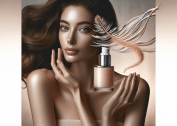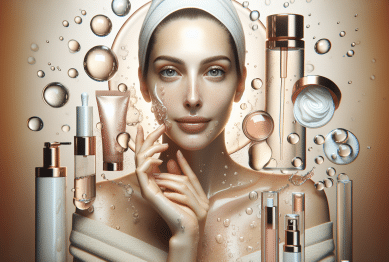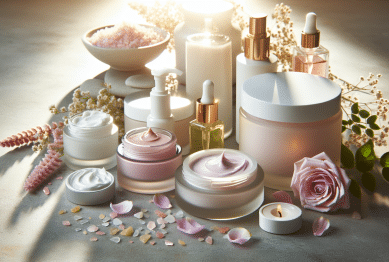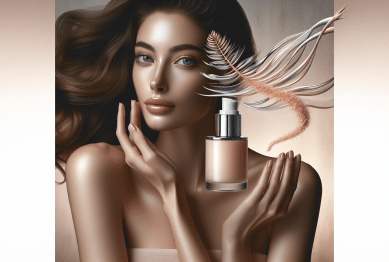Uncover the surprising power of daily sunscreen and what this simple step could mean for skin health, premature aging, and beauty routines. Explore how ultraviolet protection, ingredient choices, and lifestyle affect youthful-looking skin in ways many people overlook.
Sunscreen and the Science Behind Skin Aging
Many people underestimate the impact of daily sunscreen on the aging process, yet scientific evidence shows ultraviolet (UV) exposure as a prime factor in premature wrinkles and skin discoloration. Regular sunscreen use helps protect against these changes by blocking or absorbing harmful rays before they cause cellular damage. Repeated sun exposure without protection can damage elastin and collagen fibers, which serve as the skin’s support system. As these fibers break down, skin loses firmness, and fine lines deepen. According to leading dermatological research, this process, known as photoaging, accounts for most visible signs of aging—even more than genetics for some individuals (https://www.aad.org/public/everyday-care/sun-protection/shade-clothing-sunscreen/how-sunscreen-works).
The protective benefits of sunscreen are significant across all skin tones. Melanin provides some natural defense, but even darker skin types are susceptible to the effects of UVA and UVB rays. UVA rays penetrate deeply, leading to changes in the dermis, while UVB rays cause surface redness and sunburn. Studies suggest that broad-spectrum sunscreens, which defend against both types, offer optimal coverage. When applied consistently, they safeguard against sun spots, roughness, and uneven tone—which tend to develop over time, not just after a day at the beach (https://www.niams.nih.gov/health-topics/sun-safety).
Importantly, sunscreen isn’t only important outdoors. Indoor lighting and windows can allow UVA rays to enter, subtly contributing to cumulative skin changes. Maintaining a daily habit, even on cloudy days, forms a reliable line of defense against invisible but lasting damage. Integrating sunscreen with antioxidants, like vitamin C, further enhances protection by neutralizing free radicals generated by UV exposure. This approach supports a smoother, more even skin texture, revealing how simple habits could make a long-term impact for those focused on their beauty routine.
Choosing the Right Sunscreen: Ingredients and Label Secrets
Navigating modern sunscreen aisles can be overwhelming—SPF numbers, water resistance claims, and ingredient lists fill every bottle. But understanding these labels is essential for both wellness and beauty. Sun Protection Factor (SPF) is often confused with total protection. While higher values indicate more blockage of UVB rays, broad-spectrum labeling is crucial since it ensures UVA coverage too. Mineral (physical) sunscreens, using zinc oxide or titanium dioxide, sit on top of the skin and reflect rays, while chemical filters, like avobenzone or oxybenzone, absorb them (https://www.fda.gov/consumers/consumer-updates/sunscreens-how-help-protect-your-skin-sun).
Many individuals select sunscreens based on skin type or sensitivity. Mineral formulas are usually recommended for delicate or acne-prone complexions, as they risk fewer irritations and block visible light that can worsen pigmentation. If sweating or swimming, opting for water-resistant products helps ensure continued effectiveness. Some people are drawn to extra benefits, such as added antioxidants or hydrating components, blended into certain modern formulas. By reading ingredient lists thoroughly, users can avoid common allergens and promote a healthy complexion even while safeguarding against aging.
Another important consideration is product feel and finish. For makeup wearers, lightweight formulas or sunscreen-makeup hybrids can simplify routines and encourage daily use. Research shows people are more likely to maintain sun protection if their chosen product feels good, absorbs well, and doesn’t cause breakouts. From drugstore shelves to dermatology offices, there is a growing array of options designed to fit various preferences. Still, consistency remains key: whatever formula is chosen, daily reapplication helps unlock maximum benefits and maintain beauty over time.
Invisible Sun Damage: How UV Rays Cause Changes You Can’t See
Much of the harm caused by sun exposure isn’t immediately visible. Subtle DNA changes and inflammation can accumulate beneath the surface, manifesting as brown spots, thinning, or sagging years later. Many medical journals highlight how these invisible shifts set the stage for deep wrinkling and texture loss over decades (https://www.skincancer.org/skin-cancer-information/skin-cancer-facts/). Recognizing that most sun damage happens before age 20 can be motivating, but evidence demonstrates that it’s never too late to reduce risk by adopting sunscreen habits at any age.
Researchers now use advanced imaging—from UV photography to dermoscopy—to measure sun damage before it shows. These methods reveal areas of pigment changes or collagen loss that aren’t yet obvious. Such tools help educate users that even tan or unburned skin is experiencing unseen stress. This understanding underscores why sunscreen is not just a beauty tool but a skin health essential, with daily use slowing the clock on premature aging and offering preventive value beyond aesthetics alone.
The unexpected sources of UV exposure further complicate things: many people receive significant exposure while driving, sitting near windows, or even during brief outdoor errands. With this in mind, integrating broad-spectrum sunscreen into routines—regardless of season—helps offset the unseen impact of everyday rays. Even simple changes, like applying sunscreen before work or using protective lip balm, can help shield skin from stealthy but significant aging triggers.
Sunscreen as Part of a Holistic Beauty Ritual
Creating a beauty regimen that includes daily sunscreen means embracing a holistic approach to care. This step is as essential as cleansing or moisturizing and often works best in concert with lifestyle habits such as hydration, balanced eating, and gentle exfoliation. Experts from leading medical schools affirm that integrating sun protection consistently helps skin stay clear, radiant, and youthful for years to come (https://www.health.harvard.edu/blog/sunscreen-basics-2019061916794).
Beyond the face, arms, hands, chest, and neck are frequently affected by sun—but are also commonly forgotten. These areas often reveal age sooner than others due to routine exposure. Adding sunscreen daily to these spots completes a true full-body approach. Over the long run, full-coverage routines have been shown to harmonize skin tone, soften texture, and reduce the appearance of fine lines as part of a total beauty strategy.
Pairing sunscreen with hats, sunglasses, and protective clothing amplifies its benefits without complicating beauty rituals. Modern style no longer has to mean sacrificing skin’s future. Instead, those who adapt their skincare in this way enjoy peace of mind—confident that each small act supports ongoing vibrancy and overall wellness, reflecting not just how skin looks but how it feels from the inside out.
Debunking Sunscreen Myths: Common Misconceptions to Avoid
Confusion around sunscreen often arises from popular myths. For example, some believe sunscreen is unnecessary on cloudy days or for darker skin—but up to 80% of UV rays can still penetrate clouds, and everyone’s skin is vulnerable to photodamage. Others worry that sunscreen blocks vitamin D synthesis, yet research indicates daily use has minimal impact on the body’s vitamin D production (https://www.cdc.gov/cancer/skin/basic_info/sun-safety.htm).
Another misconception is that only vacationers or those spending hours outdoors need sun protection. In truth, the accumulation of incidental sun exposure—from quick walks to sitting by a window—adds up over months and years. Sun protection is really a lifestyle shift and not just a seasonal accessory. Empowered with facts, individuals can confidently approach skin care decisions that nourish both beauty and health holistically.
Some users worry about potential side effects from chemical filters or breakouts from sunscreen, but dermatologists suggest testing products on small areas and seeking non-comedogenic or hypoallergenic formulas when needed. The variety of available products means nearly everyone can find a formulation that fits their needs and preferences, helping maintain consistent use and overall sun safety—year-round.
Maximizing Results: Application Tips for Lasting Protection
Getting the best from daily sunscreen involves technique as much as product. Applying the correct amount—about a teaspoon for the face and neck and a shot glass for the body—ensures full coverage. Reapplying every two hours, or after sweating or swimming, maintains effectiveness. Many beauty experts emphasize that layering sunscreen under makeup does not diminish its effects and, with the right formulas, blends seamlessly into any routine (https://www.cancer.org/healthy/be-safe-in-sun/sunscreen.html).
Application consistency matters more than perfection; missing small areas is a common pitfall, especially around the ears, hairline, and lips. Creating a reminder—such as keeping sunscreen by the toothbrush or in a bag—can improve regular use. When using both sunscreen and insect repellent, sunscreen should be applied first for optimal absorption. These habits work together for comprehensive skin support.
Long-term adherence to sun-safe practices not only supports beauty but can also help reduce the risk of skin cancers. With tailored SPF choices, careful application, and integration into dependable rituals, sunscreen becomes more than a chore. It transforms into a foundational tool for skin confidence and ongoing wellness, helping everyone approach skin care with clarity and purpose.
References
1. American Academy of Dermatology. (n.d.). How does sunscreen work? Retrieved from https://www.aad.org/public/everyday-care/sun-protection/shade-clothing-sunscreen/how-sunscreen-works
2. National Institute of Arthritis and Musculoskeletal and Skin Diseases. (n.d.). Sun Safety. Retrieved from https://www.niams.nih.gov/health-topics/sun-safety
3. U.S. Food & Drug Administration. (2021). Sunscreens: How to Help Protect Your Skin from the Sun. Retrieved from https://www.fda.gov/consumers/consumer-updates/sunscreens-how-help-protect-your-skin-sun
4. Skin Cancer Foundation. (n.d.). Skin Cancer Facts & Statistics. Retrieved from https://www.skincancer.org/skin-cancer-information/skin-cancer-facts/
5. Harvard Health Publishing. (n.d.). Sunscreen basics. Retrieved from https://www.health.harvard.edu/blog/sunscreen-basics-2019061916794
6. Centers for Disease Control and Prevention. (n.d.). Basic Information About Skin Cancer. Retrieved from https://www.cdc.gov/cancer/skin/basic_info/sun-safety.htm









